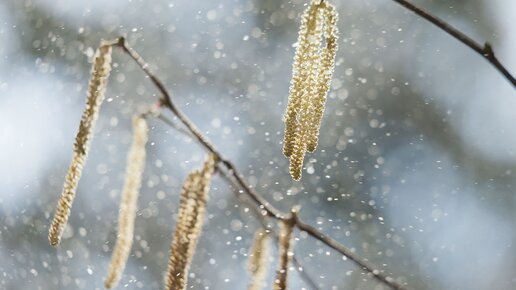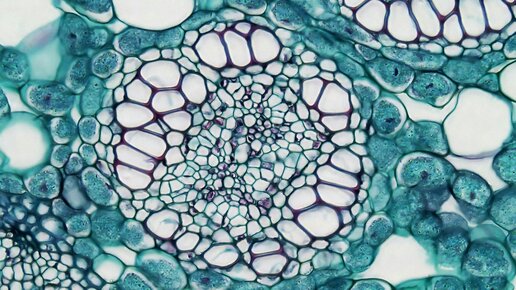Searching the internet for answers to questions such as “Which foods should people with histamine intolerance avoid and which are well tolerated?” often leads people with histamine intolerance to long tables that often confuse more than help. Many sufferers become frustrated and come to the conclusion that they are hardly allowed to eat anything. But there is no reason to be unsettled by this flood of information. In this article, you will find well-founded information on the topic of nutrition for histamine intolerance.
What type of food usually contains high histamine levels? Which food contains low histamine?
While people with fructose or lactose intolerance can follow a relatively well-defined nutritional plan, the distinction for histamine intolerance is not quite so clear-cut. Nevertheless, there are also ‘golden rules’ for histamine intolerance that can help you follow a low-histamine diet:
- Keyword: freshness. Fresh food and meals are not automatically unproblematic, but they definitely pose a lower risk of intolerance. Care should be taken if meals have been left standing or precooked, because the longer a food is stored and heated, the more the conversion of histidine into histamine is promoted. This means that a meal that was tolerated the day before can cause intolerance reactions the next day.
- Keyword: ripening. Good things don't always take a while! The longer a food product ripens – be it cheese, salami or similar – the more critical it is for people with histamine intolerance.
- Keyword: processed foods. Care should also be taken with processed foods, which are generally problematic, especially if they contain flavour enhancers such as yeast extract, colourings or preservatives.
- Keyword: alcohol. Alcohol is also problematic for those with histamine intolerance. This is because all alcohol, whether schnapps, beer or wine, blocks the body's own histamine-degrading enzyme DAO. Some types of alcohol, especially red wine and sparkling wine, also contain a fair amount of histamine.
Better to avoid: high histaminge foods
Some foods are particularly rich in histamine due to their ripening or manufacturing process. These include, among others:
- Ripened cheese
- Bacon
- Prosciutto
- Salami
- Sparkling wine
- Sauerkraut
However, it is difficult to provide a precise figure for the histamine content of many other foods, as it can vary greatly.
What foods can you eat with histamine intolerance? High histamine foods and a low histamine food list for a low histamine diet
Histamine-intolerant people who would still like more guidance can use the following traffic light system as a reference point.
|
Food |
Rating |
|
|
Meat, fresh |
||
|
Minced meat |
✓ |
|
|
Beef |
✓ |
|
|
Pork |
✓ |
|
|
Beef liver |
✓ |
|
|
Duck |
✖ |
|
|
Chicken |
✓ |
|
|
Turkey |
✓ |
|
|
Sausages |
||
|
Bratwurst |
✓ |
|
|
Gendarme |
✖ |
|
|
Liver Sausage |
∼ |
|
|
Salami |
✖ |
|
|
Smoked, air-dried ham |
✖ |
|
|
Fish |
||
|
Fish fingers |
✓ |
|
|
Trout |
✖ |
|
|
Herring |
✖ |
|
|
Salmon, fresh |
∼ |
|
|
Smoked mackerel |
✖ |
|
|
Sardines |
✖ |
|
|
Fresh plaice |
✓ |
|
| Canned tuna |
✖ |
|
|
Food |
Rating |
|
|
Dairy products |
||
|
Camembert |
K |
|
|
Emmental |
✖ |
|
|
Gorgonzola |
✖ |
|
|
Yogurt |
✓ |
|
|
Cow milk |
✓ |
|
|
Parmesan |
✖ |
|
|
Whipped cream |
✓ |
|
|
Curd cheese |
✓ |
|
| Tilsiter |
✖ |
|
|
Food |
Rating |
|
|
Vegetables |
||
|
Eggplants |
∼ |
|
|
Beans |
∼ |
|
|
Champignons |
✖ |
|
|
Carrots |
✓ |
|
|
Potatoes |
✓ |
|
|
Sauerkraut |
✖ |
|
|
Spinach |
✖ |
|
|
Tomatoes |
✖ |
|
|
Fruit |
||
|
Pineapple |
✖ |
|
|
Apples |
✓ |
|
|
Bananas |
✖ |
|
|
Strawberries |
✖ |
|
|
Raspberries |
✖ |
|
|
Cherries |
✓ |
|
|
Oranges |
✖ |
|
|
Watermelons |
✓ |
|
|
Lemons |
✖ |
|
|
Other |
||
|
Yeast extract |
✖ |
|
|
Cacao powder |
✖ |
|
|
Nuts |
✖ |
|
|
Chocolate |
✖ |
|
|
Red wine vinegar |
✖ |
|
Tables adapted from Dr. Axel Vogelreuter, 2015.
✓ = Usually no problems
∼ = Use with caution, avoid during the withdrawal phase
✖ = Generally unsuitable for people with histamine intolerance
Histamine trap histamine liberators: these foods increase histamine in the body
In the case of histamine intolerance, it is not only the histamine (and other biogenic amines) content that counts. There is another catch: there are foods that themselves contain only a small amount of histamine (at least in part), but which cause an increased release of histamine in the body. In technical jargon, these nutritional traps are known as ‘histamine liberators’. The best known of these are strawberries, which are often blamed for allergic reactions that are not actually present. But chocolate, tomatoes, kiwi, pineapple, gluten, casein from dairy products and certain painkillers are also among the ‘histamine liberators’.
Drinks suitable for people with histamine intolerance
For people with histamine intolerance, mineral water, herbal teas and freshly pressed fruit and vegetable juices from non-critical varieties (see table) are a good choice. Alcoholic drinks should only be drunk in moderation, if at all. This is because alcoholic drinks not only contain potentially biogenic amines, but they also put a strain on the organism of histamine-intolerant people due to their enzyme-inhibiting and histamine-releasing effect. The most easily tolerated alcoholic drinks include clear schnapps. As for beer, bottom-fermented beers are the safest to try, while wine lovers should opt for dry white wines.
Conclusion
In the case of histamine intolerance, an individually adapted diet is crucial. Sufferers should prioritise fresh food, reduce the amount of ripened and fermented products they eat, and avoid foods that are high in histamine, such as ripened cheese, certain types of sausage and fish. Particular attention should be paid to histamine liberators such as strawberries, chocolate and tomatoes. Alcohol should only be consumed in moderation. Since tolerance varies from person to person, a step-by-step elimination and reintroduction of foods can help to determine the personal histamine threshold. If you are still unsure, professional nutritional advice from a doctor you trust is recommended.
Frequently asked questions:
Apples, cherries and watermelon, for example, are types of fruit that are usually tolerated without problems by people with histamine intolerance.
The following types of fruit are generally unsuitable for people with histamine intolerance: pineapple, bananas, strawberries, raspberries, oranges and lemons.
Sources:
Ledochowski M. 2014: Nahrungsmittelintoleranzen. Unverträglichkeiten erkennen und gut damit leben. Trias Verlag.
Vogelreuter A. 2015: Nahrungsmittelunverträglichkeiten. Laktose. Fruktose. Histamin. Gluten. S. Hirzel Verlag Stuttgart.









